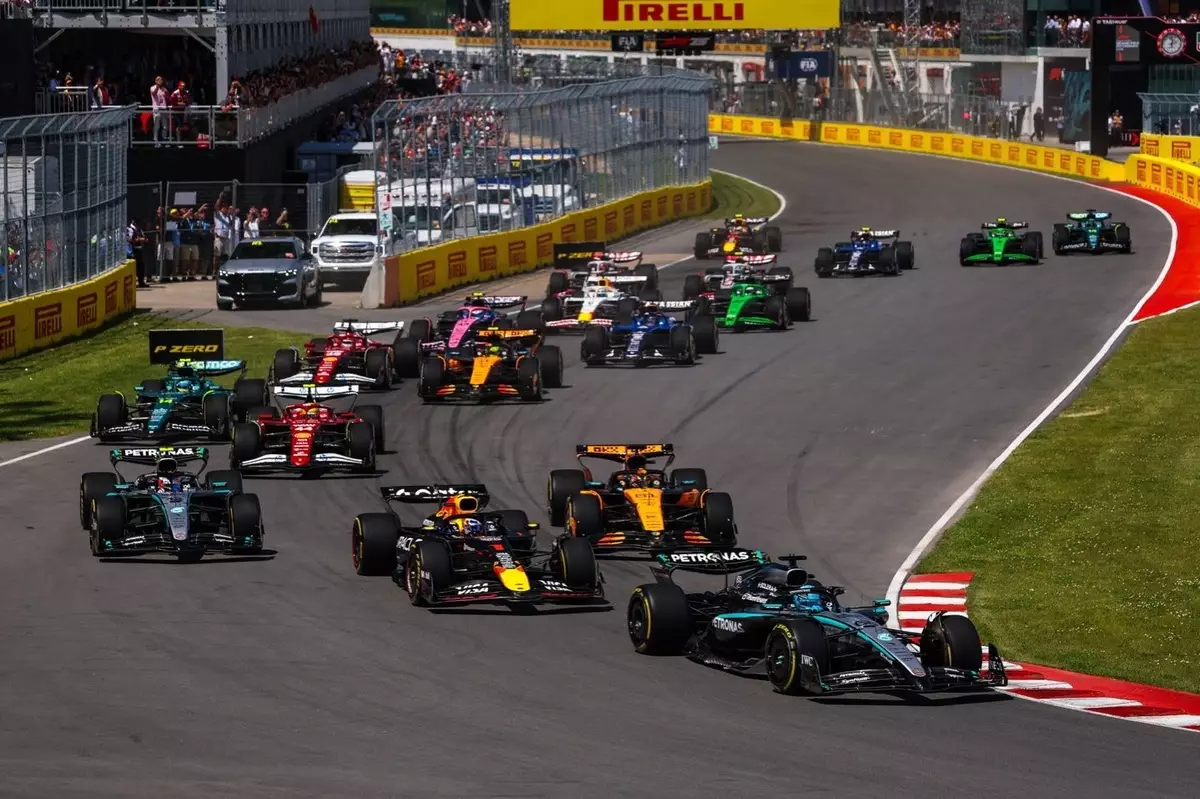The winds of change are sweeping through the world of Formula 1, bringing with them a newfound focus on transparency and clarity. Amidst mounting pressure from fans, teams, and drivers, the FIA (Fédération Internationale de l’Automobile) has taken a decisive step by publishing its revised F1 racing guidelines and penalty system. This initiative, released ahead of the 2025 racing season, aims not only to enhance understanding among competitors but also to rebuild trust in how race incidents are judged.
The crux of F1’s racing guidelines centers around the critical need for clear communication regarding overtaking maneuvers. For years, the nuances of track incidents have left teams and spectators alike in a haze of confusion. With major controversies arising out of high-stakes battles, the FIA recognized that a more explicit framework was crucial for advancing the sport.
Updated Overtaking Rules: A New Era for On-Track Battles
The 2025 guidelines delineate the parameters for overtaking maneuvers, addressing both inside and outside passes more explicitly. Now, drivers have defined criteria for when they can expect to receive room from their rivals in wheel-to-wheel combat. This enhancement in protocol doesn’t merely serve to clarify but also reshapes the dynamic of racing. The rules for inside overtakes stipulate that a car must have its front axle at least level with the other car’s mirror before its driver can expect acknowledgment of their position. Meanwhile, the outside overtakes are treated with greater scrutiny, demanding that the overtaking car be ahead at the apex of the corner.
These changes stand as a testament to the FIA’s intent to refine the competitive edge and respect drivers’ skills while ensuring safety. It conveys a message that overtaking is a calculated risk rather than a reckless gamble, ultimately promoting cleaner and fairer racing.
The Role of Race Stewards: Judgement Calls and Their Implications
At the heart of the guidelines lies the role of race stewards, the individuals entrusted with making judgment calls based on these regulations. While the FIA has published these updated suggestions, it is essential to note they remain guidelines rather than rigid laws. This flexibility affords stewards the latitude to interpret situations based on a variety of factors, including how incidents unfolded, car positioning, and even external conditions like track grip.
Such adjudications demand a delicate balance of authority and accuracy, which brings to light the skill required from stewards. The FIA’s new framework prompts a reflection on how stewards have historically navigated these challenges. In an era where split-second decisions can alter circuit outcomes, the reliance on proper judgment cannot be overstated. Interestingly, the document also lays out various factors that stewards must consider during evaluations, from tyre conditions to corner characteristics. This intricate assessment speaks volumes about the complexities involved in real-time racing scenarios.
A Driver’s Perspective: The Response to Enhanced Guidelines
The implications of these new guidelines resonate deeply within the driver’s community. George Russell, a prominent voice and Mercedes driver, welcomed this initiative, citing it as a step towards addressing the long-standing demands for transparency from the governance of the sport. Russell’s acknowledgment signifies an adaptive philosophy in F1 where driver input is integral in shaping operational frameworks. The candidness in sharing these guidelines brings a sense of ownership to drivers who navigate these vital scenarios on the track.
Changing the playbook in such a high-stakes, high-speed sport involves risks but may ultimately foster a richer competitive landscape. By engendering greater understanding among drivers about how incidents will likely be interpreted, the FIA creates an environment conducive to strategic racing. Increased awareness may reduce the contentious disputes that have plagued the sport in recent years.
Looking Ahead: The Future of F1 with Transparency
As the 2025 F1 season approaches, the role of these updated guidelines cannot be overstated. They signal a pivotal shift towards accountability while affirmatively stating that the FIA is listening to its stakeholders. The sport may seem chaotic at intersections of speed and precision, but systematic transparency could provide F1 with a much-needed dose of accessibility.
Ultimately, these developments appear to benefit not just the immediate stakeholders—teams and drivers—but also the broader public spectating experience. As fans become more invested in the nuances of rulings, they may form deeper connections with the sport, fostering a comprehensively engaging environment that transcends mere entertainment. The landscape of Formula 1 is on the brink of evolution, driven by clearer guidelines and a commitment to transparency that prioritizes fairness alongside the thrill of competition.

